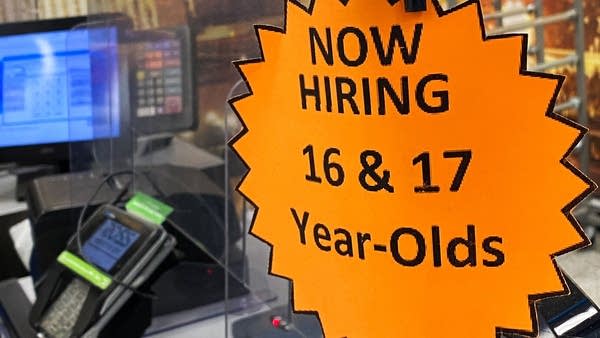
With a tight labor market has also come a low unemployment rate for teens. It’s at the lowest level in nearly 70 years. And teens have patched huge holes among workers for business owners.
The staff at Herrell’s Ice Cream in Northampton, Massachusetts, has always skewed young. Mostly people who have just graduated from college. But owner Judy Herrell says these days her staff has gotten even younger.
She’s had to hire more high school and college students. And in some ways she’s fine with it. She needs workers after all. And she says teens are often eager to learn. But, they’re also teenagers.
“No, you really do have to be here on time. Or no, you really can’t do that, that’s not appropriate,” Herrell said. “Or, you know, there’s a lot of teaching involved with the younger kids. They don’t have the life experience.”
Life experience or not, more teens are gaining work experience. In fact, teen employment is the highest it’s been since before the Great Recession. Matt Notowidigdo, a labor economist at The University of Chicago, thinks the biggest reason younger people are working again is rising pay.
“You’re sitting in class in a community college and you see all your friends getting really high paying jobs and you think, ‘Why do I wanna be sitting in the classroom? I should go out and work right now,’ ” he said.
College enrollment is down more than a million students since the beginning of the pandemic, according to the National Student Clearinghouse. And community colleges make up more than 60% of the decline.
“Obviously it depends on the student, but I’m nervous that a lot of them might not be making the right longer term decision,” Notowidigdo said.
But in the short term, the trend is keeping businesses happy. Fred Pfeiffer is the store director at Dorothy Lane Market, a chain of three grocery stores in Dayton, Ohio. At one point this year, he had 30 job openings. Now he’s almost fully staffed — though some of the new workers are young, too young to use equipment like deli slicers.
“We have some in our meat department just waiting on the counter,” Pfeiffer said. ‘So we have found ways to utilize the under-18s to help us get through this crunch.”
This crunch, for now. Because most business owners, like Judy Herrell in Massachusetts, expect to lose many workers who are in school once fall comes.
“So I’ll be hiring again at the end of August if anybody hears this,” she said, laughing.
She hopes by then, the whole worker shortage thing will have worked itself out.










